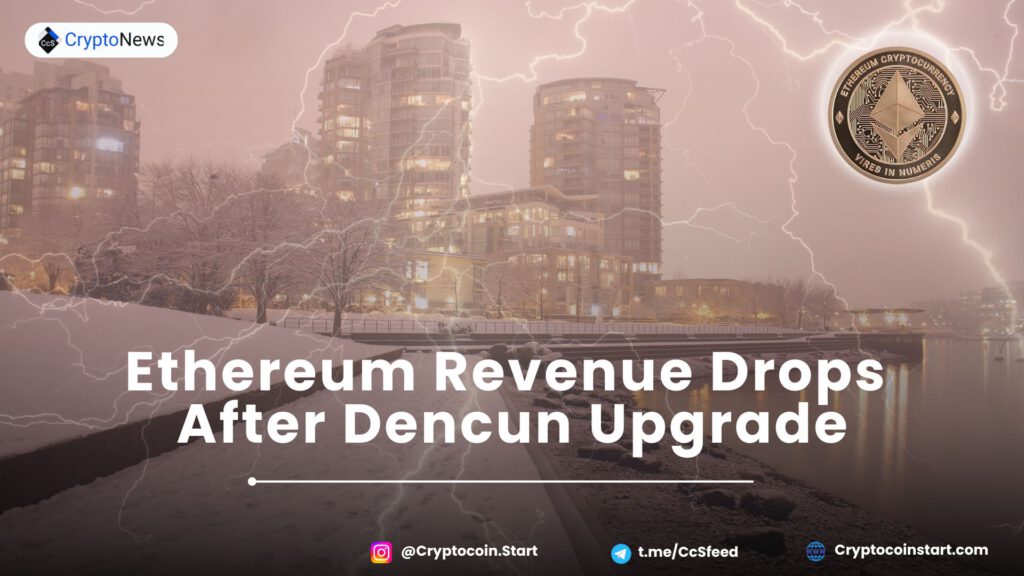
Ethereum Revenue Drop After Dencun Upgrade: A Closer Look
Following the recent Dencun upgrade, Ethereum has experienced a significant decline in its Layer 1 (L1) protocol revenue. According to research from Galaxy Research, Ethereum’s L1 revenues have dropped to nearly zero. This decline marks a pivotal moment in Ethereum’s scaling strategy, prompting the platform to turn to social media to discuss the implications of this shift.
Why Has L1 Revenue Dropped?
Several factors contribute to the decrease in Ethereum’s L1 revenues. A major influence is the rise of Layer 2 (L2) solutions, such as zk-rollups, Arbitrum, and Optimism. These solutions process transactions off-chain, only utilizing Ethereum’s L1 for settlement and aggregation purposes. Before the Dencun upgrade, Ethereum’s L1 still earned revenue from the transaction fees associated with these settlements.
However, post-Dencun, L2 solutions have become more efficient in their interactions with L1, drastically reducing the frequency and cost of these engagements. The upgrade has optimized rollup costs and enhanced data availability, allowing L2 solutions to incur much lower fees compared to the Ethereum L1 protocol.
Is Ethereum’s Security Model at Risk?
While the reduction in transfer fees benefits users, it significantly cuts into Ethereum L1’s revenue generated from L2-based operations. The near-zero revenue figure underscores the growing dominance of L2 solutions, which now handle a substantial portion of Ethereum’s transaction volume, thereby shifting activity away from the main network.
This shift presents a potential long-term risk to Ethereum’s layer-1 security model. Galaxy Research notes that Ethereum relies heavily on transfer fees to compensate validators and maintain network security. With L2 solutions taking on more of the transaction load, the sustainability of this security model is at risk unless new revenue sources or incentives are introduced.
Concrete Conclusions
Based on the current developments, several conclusions can be drawn:
- L2 solutions are significantly reducing Ethereum L1’s revenue by handling more transactions off-chain.
- The Dencun upgrade has optimized L2 interactions, resulting in lower fees for Ethereum L1.
- Ethereum’s security model could be at risk if alternative revenue streams are not identified.
- Lower transaction costs are advantageous for users but pose economic challenges for the network.
The Need for New Strategies
The Ethereum community and developers must develop strategies to address these challenges. Without creating new revenue sources and incentive mechanisms, the network’s security and sustainability could face significant hurdles. It is crucial to assess these developments carefully to ensure the ecosystem remains balanced for both users and validators.
As Ethereum continues to evolve, the balancing act between scalability and security will be critical. The community’s ability to adapt to these changes will determine the platform’s future success and sustainability.


